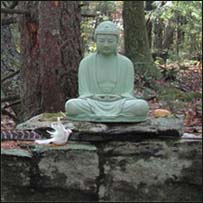|
|
 |
Please support Dharma Seed with a 2025 year-end gift.
Your donations allow us to offer these teachings online to all.

|

|

|
The greatest gift is the
gift of the teachings
|
|

|
| |
|
Dharma Talks
|
2021-12-03
Breath meditation, Dhamma talk on "Dune"
1:41:06
|
|
Bhante Sujato
|
|
|
Breath meditation by Bhante Sujato. Dhamma talk by Bhante Sujato on "Dune" by Frank Herbert. AI and consciousness. The Buddha's concept of "subtle materiality" as physical properties of internal experiences (sukhuma vs oḷārika).
|
|
Lokanta Vihara
|
Attached Files:
-
We need a Butlerian Jihad against AI
by Erik Hoel
(Link)
-
The empty brain
by Robert Epstein
(Link)
-
On why AI probably can't have consciousness
by Dr Jaak Panksepp
(Link)
|
|
|
|
|